
Article Summary: Lassen Volcanic National Park Facts
Lassen Volcanic National Park Facts! In this article, we provide you with 10 amazing facts about one of America’s most magnificent national parks.
More Than Just Parks is your one-stop-shop when it comes to learning everything you’ll need to know about America’s national parks. We’ve got expert guides, beautiful photos, helpful tips, breathtaking films and so much more.
I’ve been to so many of these amazing places since retiring from teaching in 2018. Did I mention that I taught history? I spent a lifetime teaching about the history behind some of these natural wonders. Then I got to see them firsthand. And now I’m sharing some of the incredible stories about these beautiful places with you. It doesn’t get any better than that!
More Than Just Parks takes a deeper dive with its national park facts. We’ve done our homework so that you’ll get more than you bargained for.
Without further ado, let’s dive in.
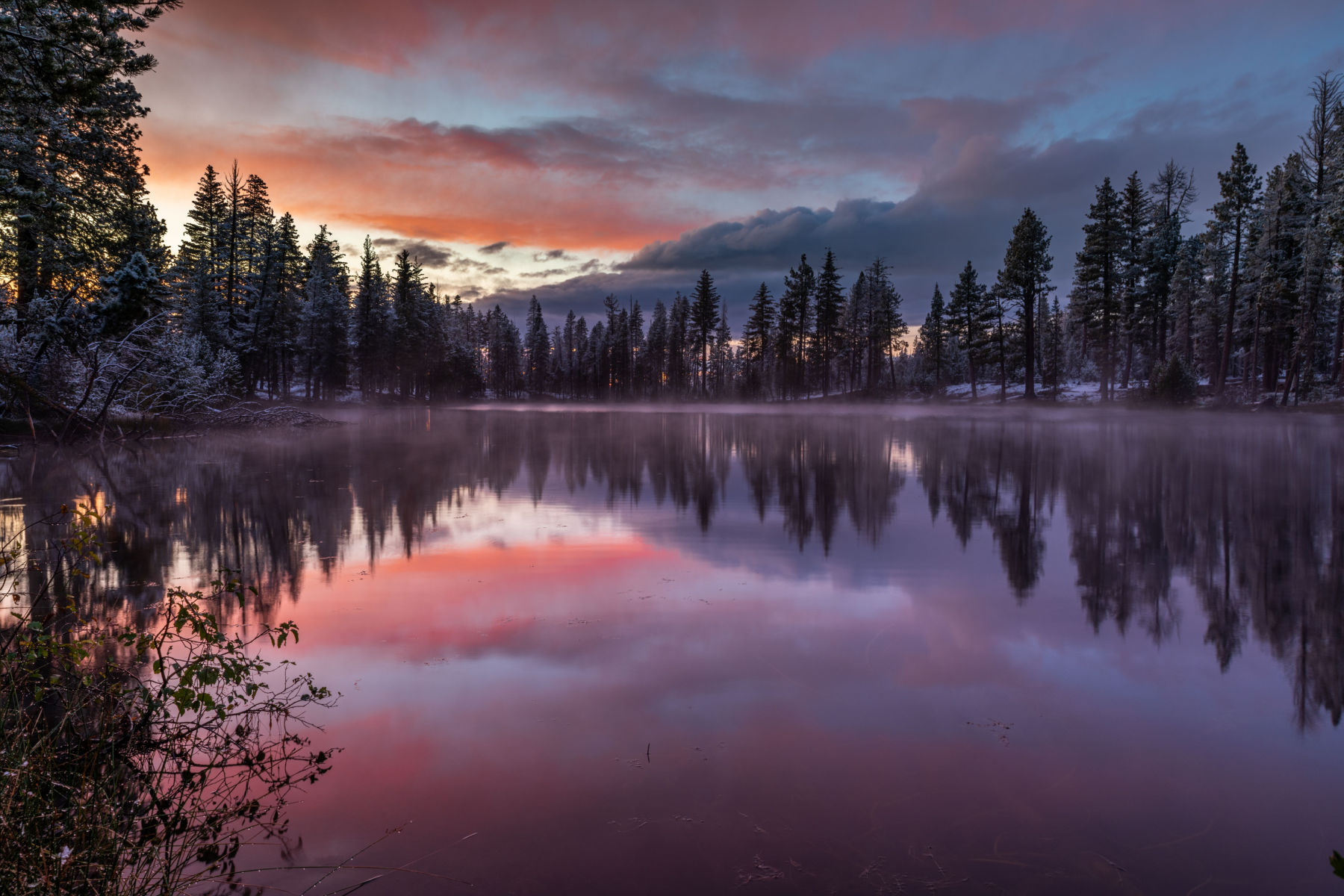
Table Of Contents: Lassen Volcanic National Park Facts
Lassen Volcanic National Park Facts
- Facts About Lassen Volcanic National Park
- Lassen Volcanic National Park Facts
- Top 5 Lassen Volcanic National Park Facts
- 1. All Four Types Of Volcanoes Found In The World Are Represented In Lassen Volcanic Park
- 2. An American Frontiersman Was The First To Explore The Area Of Lassen Volcanic National Park
- 3. The Man For Whom Lassen Volcanic Park Is Named Had An Incredible Story
- 4. Lassen Was Also A Meeting Point For At Least Four Native American Tribes
- 5. An Eruption At Lassen Peak Devastated Nearby Areas & Rained Volcanic Ash As Far Away As 200 Miles
- Top 10 Lassen Volcanic National Park Facts
- 6. John F. Kennedy Visited Lassen Volcanic National Park
- 7. A Photographer’s Pictures Of Lassen Focused National Attention On The Area And Helped To Bring About A National Park
- 8. The Park’s Main Road Is The Highest Road In The Cascade Mountains
- 9. Every Rock At Lassen Originates From Volcanoes
- 10. The Park Is Home To A Diverse Array Of Wildlife
- Why Trust Us About Lassen Volcanic National Park?
- Meet The Parks Brothers
- Map Of Lassen Volcanic National Park
- We Hope You’ll Follow Our Journey
- Top 5 Lassen Volcanic National Park Facts
Facts About Lassen Volcanic National Park
Lassen Volcanic National Park is a beautiful and unique park located in California. The park covers over 106,000 acres of land and is home to a wide variety of plant and animal life, as well as several unique geological features.
It’s named after Lassen Peak, a massive volcano that stands at an elevation of 10,457 feet and is located within the park’s boundaries. The park is also home to several other unique geological features, including hot springs, fumaroles, and lava flows.
The landscape is diverse, with forests of pine and fir trees, grasslands, and wetlands. The park is also home to a wide variety of plant and animal life, including black bears, bighorn sheep, and over 250 species of birds.
There are many ways to explore and enjoy Lassen Volcanic National Park. Visitors can go hiking or backpacking on the park’s trails, go fishing or boating in the park’s streams and lakes, or even go skiing or snowshoeing in the park’s beautiful winter landscapes. There are also several campgrounds and lodges located within the park, providing comfortable accommodations for visitors.
Lassen Volcanic National Park is a beautiful and unique place, offering visitors the opportunity to experience the beauty and majesty of the natural world in a truly special setting.
It’s a great destination for outdoor enthusiasts, with plenty of opportunities for hiking, camping, and other outdoor activities.
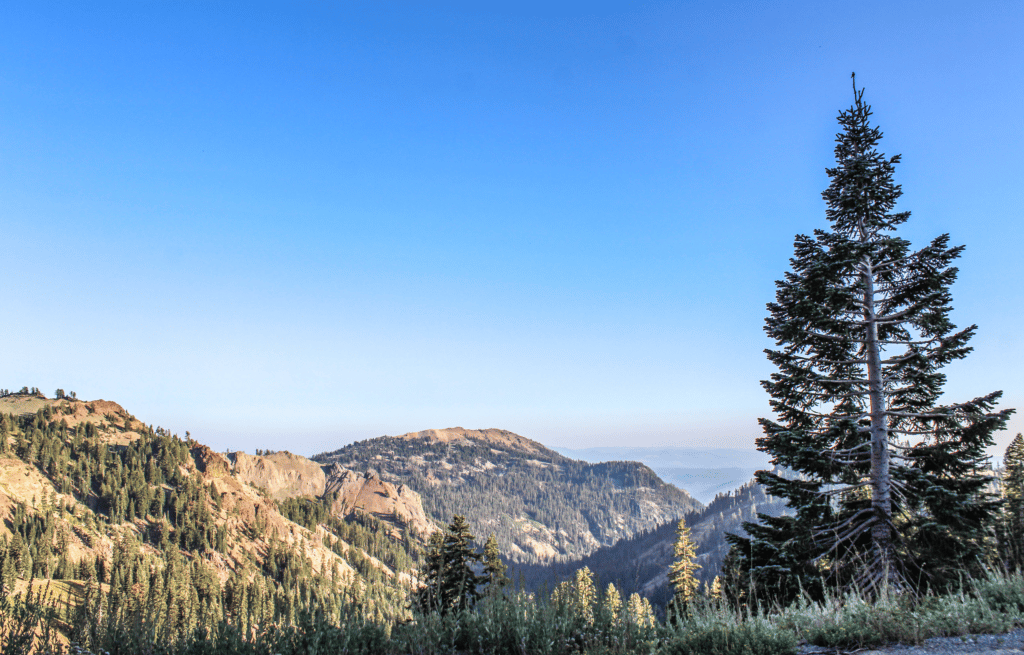
Here Are Some Of The Basic Facts
- Location: California
- Acreage: 106,452 acres.
- Visitation: In 2021, Lassen Volcanic National Park had 359,635 park visitors.
- Elevation: The park ranges in elevation from 5,650 feet to 10,457 feet.
- Climate: Winter weather and conditions exists approximately November to May and summer conditions exist June through October. Spring and fall tend to be shoulder seasons. Winter conditions usually persist well into June in the higher elevations of the park (Lassen Peak area). Spring snow storms can occur as late as June.
- When Did It Become A National Park? In August of 1916, Lassen Volcanic National Park was established. The park and Lassen Peak take their name from Peter Lassen, one of the first white settlers in the northern Sacramento Valley, who discovered of a route through the mountains called the Lassen Trail.
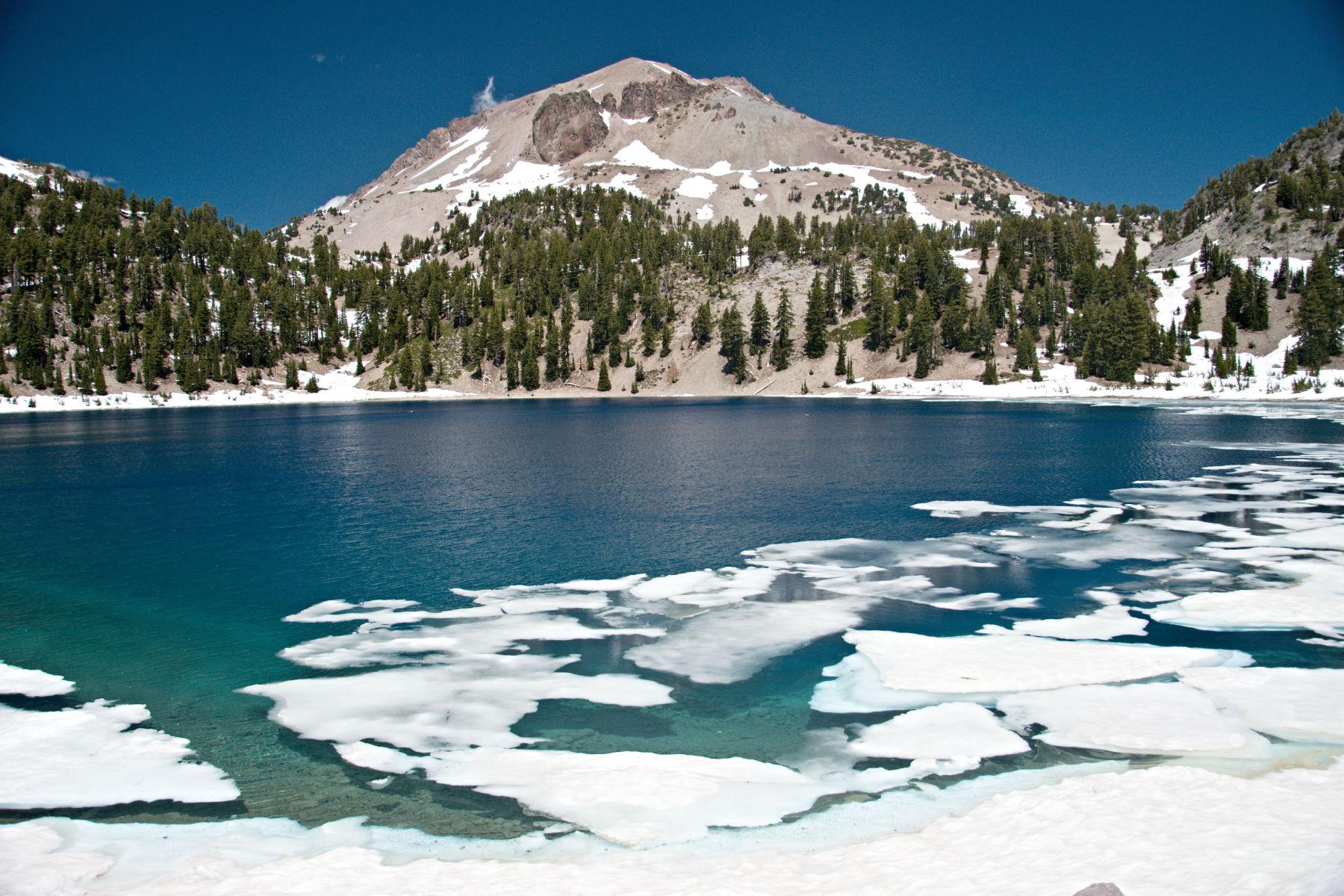
CHECK OUT: 7 National Parks Near Los Angeles You’ll Love
Lassen Volcanic National Park Facts
Top 5 Lassen Volcanic National Park Facts
1. All Four Types Of Volcanoes Found In The World Are Represented In Lassen Volcanic Park
If you’re interested in learning about volcanoes and their history then Lassen Volcanic National Park is a great place to visit.
Among the more surprising Lassen Volcanic National Park Facts is that you can find all four different types of volcanoes found in the world in the park.
What are the four different types of volcanoes you might be asking? They includes: (1) Shield (Prospect Peak), (2) Plug Dome (Lassen Peak), (3) Cinder Cone (Cinder Cone), and (4) Composite (Brokeoff Volcano) Volcanoes.
Additionally, Lassen’s hydrothermal features include boiling mudpots, steaming ground, roaring fumaroles, and sulfurous gases – all visible either by car or via a short walk.

The Four Types Of Volcanoes Explained
Cinder Cone Volcanoes are the smallest and simplest type of volcano. They are characterized by their conical shape and are composed of loose fragments of volcanic rock, such as cinders, pumice, and ash.
Composite Volcanoes, also known as stratovolcanoes, are larger and more complex than cinder cone volcanoes. They are composed of alternating layers of ash, lava, and other volcanic materials, and are typically cone-shaped.
Shield Volcanoes are the largest type of volcano, and are characterized by their low, broad shape. They are composed of basaltic lava flows that have erupted from a central vent, and are typically found in areas with low levels of volcanic activity.
Lava Dome Volcanoes are small, dome-shaped structures that are composed of highly viscous lava. They typically form when lava is too thick to flow away from the vent, and instead piles up around the vent to form a dome-shaped structure.

CHECK OUT: 6 AMAZING National Parks Near San Diego You’ll Love
2. An American Frontiersman Was The First To Explore The Area Of Lassen Volcanic National Park
In doing my research for this article, I came across the story of the one of the most amazing men to have graced the pages of history.
He was an American clerk, transcontinental pioneer, frontiersman, hunter, trapper, author, cartographer, mountain man and explorer of the Rocky Mountains, the Western United States and the Southwest during the early 19th century. Now how’s that for a resume?
Jedediah Strong Smith was one of the premier frontiersmen of his day.
In his short life he became the first white man to traverse Utah, Nevada, and parts of California.
He also helped find a new route over the continental divide to the western side of the Rocky Mountains through South Pass in Wyoming.
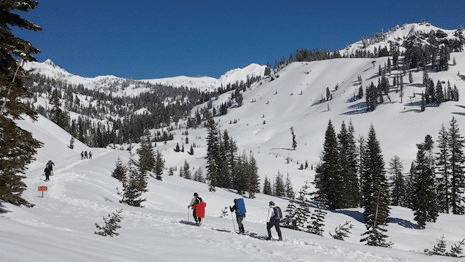
Smith Traversed The Area In 1848
Trapper Jedediah Smith traversed the area which is today Lassen Volcanic National Park in 1828 on his overland trek to the West Coast.
Smith and his party went on to traverse the redwood forests of California. He described the redwoods as “the noblest trees” he had ever seen.
Smith’s wish was to be “the first to view a country on which the eyes of a white man had never gazed and to follow the course of rivers that run through a new land.”
His reports on the geology and geography of the western territories appeared in newspapers of the day, and proved that the Sierra Nevada could be safely crossed to reach California.
In a remarkably few years, his travels, observations, and notes filled in many blank spaces on the country’s map. (Source: California Department Of Parks & Recreation)
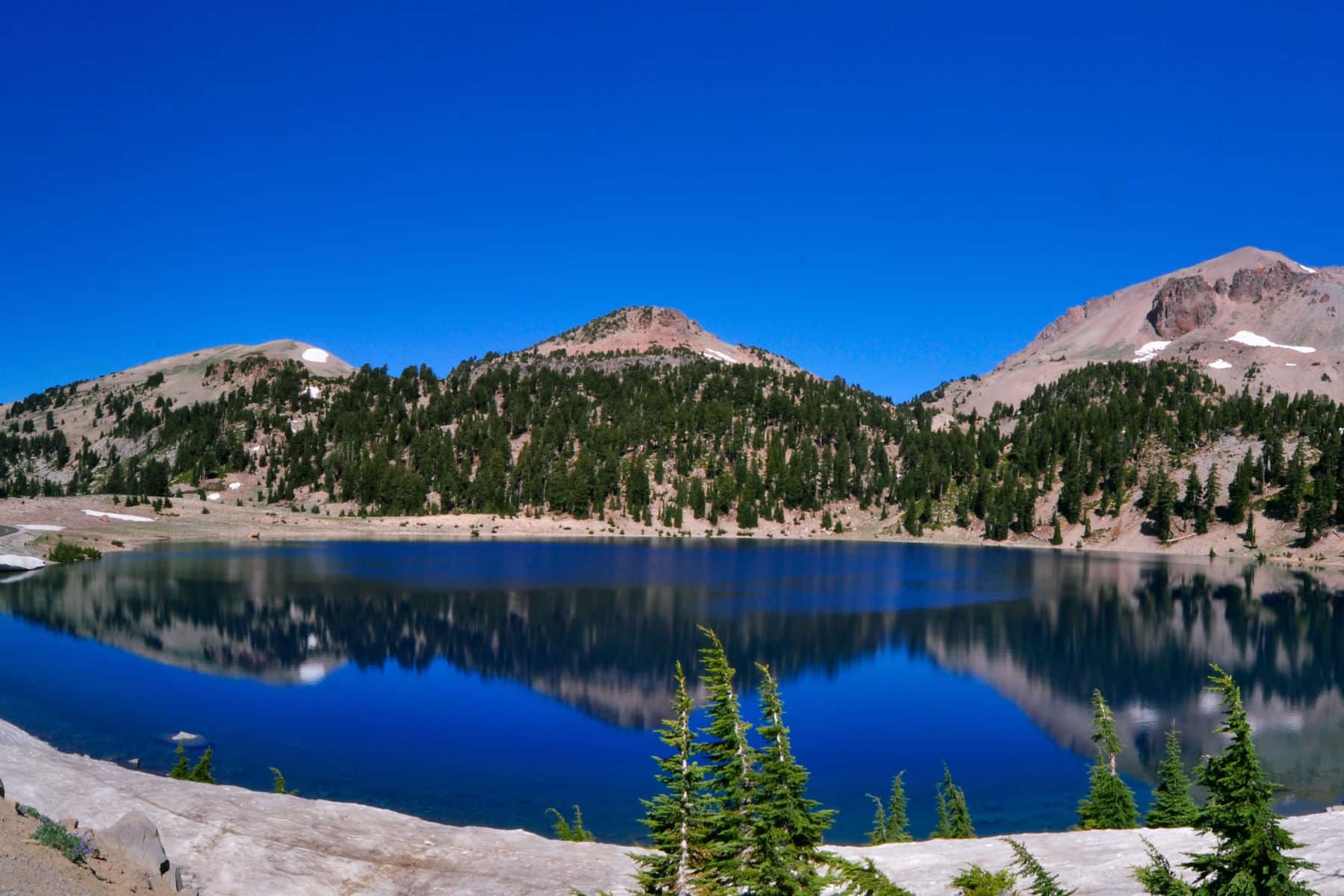
He Had A Park Named After Him
In recognition of his achievements, Smith had a park named after him.
Jedediah Smith Redwoods State Park is the last in a long string of redwood parks that stretch up Northern California’s coast.
A few miles inland from the ocean, the park is densely forested with huge ancient trees. In fact, it contains seven percent of all the old-growth redwoods left in the world.

Jedediah Smith Redwoods State Park
The park was established in 1929 with a small parcel donated to Save the Redwoods League by the family of lumberman Frank Stout.
Believe it or not, Jedediah Smith Redwoods State Park has more old growth trees per acre than any other park.
It’s also considered to be the most unspoiled of California’s redwood parks which you might want to know just in case you’re interesting in visiting.

CHECK OUT: 8 BEST National Parks Near San Francisco To Visit
3. The Man For Whom Lassen Volcanic Park Is Named Had An Incredible Story
As indicated in the section above, what I most enjoy about researching and writing these articles for More Than Just Parks is learning about the remarkable men and women who helped to make these incredible places possible through their contributions and achievements.
Men like Jedediah Smith and the man for whom this national park is named after – Peter Lassen.
Peter Lassen, born in Copenhagen, Denmark, in 1800, is the namesake for both Lassen County and Lassen Volcanic National Park in California.
He was a blacksmith by trade and embodied the “old pioneer” spirit of the Wild West.
Lassen began his life in America in Boston, and then moved to Philadelphia, Missouri and eventually reached Oregon, Fort Ross and Bodega Bay.
After that he traveled south to Sutter’s Fort in Sacramento, where he was appointed to a posse to look for horses stolen from Sutter’s Ranch.
He was known for his explorations and travels in the western United States, and his name is now associated with the county and national park in California.
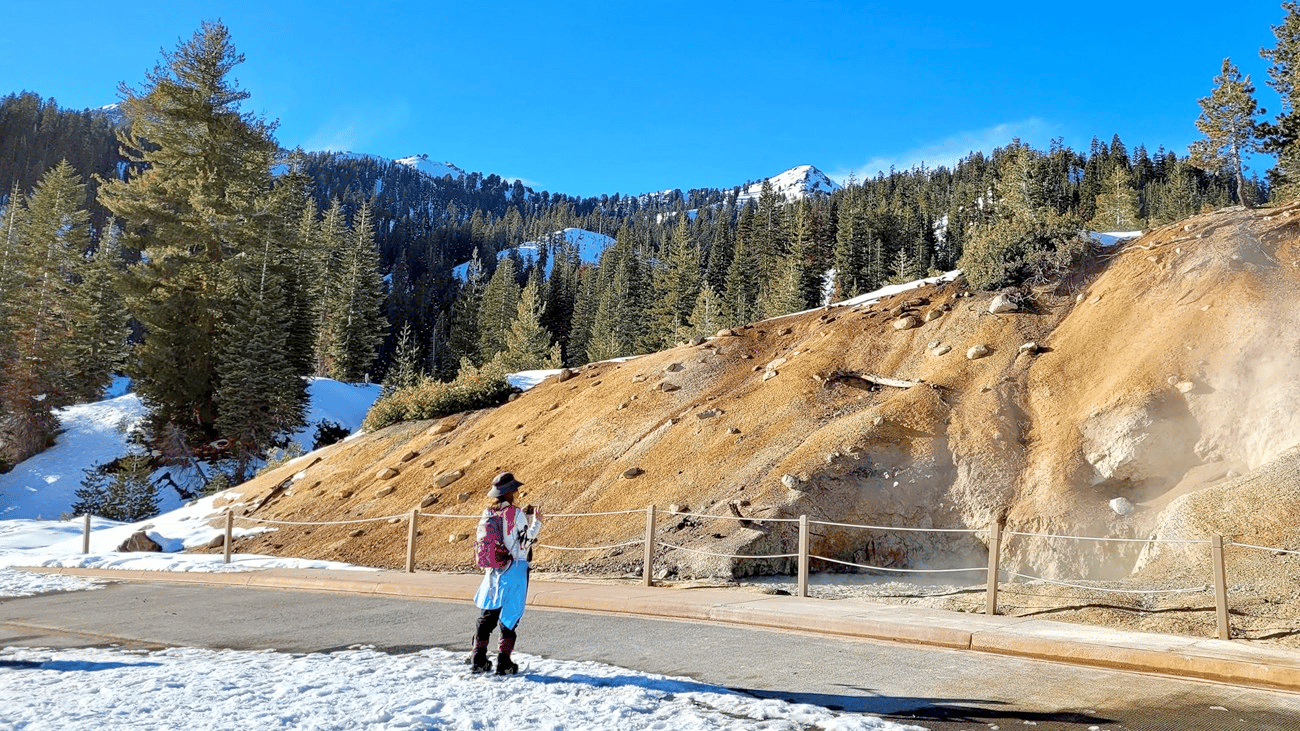
Lassen Obtained Mexican Citizenship
When Lassen arrived at the confluence of the Sacramento River and Deer Creek, he was so impressed with the country side, he obtained the required Mexican citizenship so he could purchase 22,000 acres at Deer Creek.
Lassen fell in love with ranching and built a house, store, and even a nearby gristmill. He hoped to encourage more settlers to build a community there.

The Lassen Cutoff
Peter Lassen created a cutoff as a “shortcut” to the California goldfields.
Unfortunately, the Lassen Cutoff led many of the 49ers astray. The route was challenging and led emigrants nearly 150 miles farther than other, more proven paths.
Some speculate that Lassen wanted to lure people to his ranch to stock up on necessary supplies, putting extra money in his own pocket.

Two Pioneer Trails
According to the National Park Service, two pioneer trails, developed by William Nobles and Peter Lassen, are associated with the park.
In 1851, Nobles discovered an alternate route to California, passing through Lassen.
Sections of the Lassen and Nobles Emigrant Trail are still visible today.
Lassen guided settlers near here and tried to establish a city.
Mining, power development projects, ranching, and timbering were all attempted.
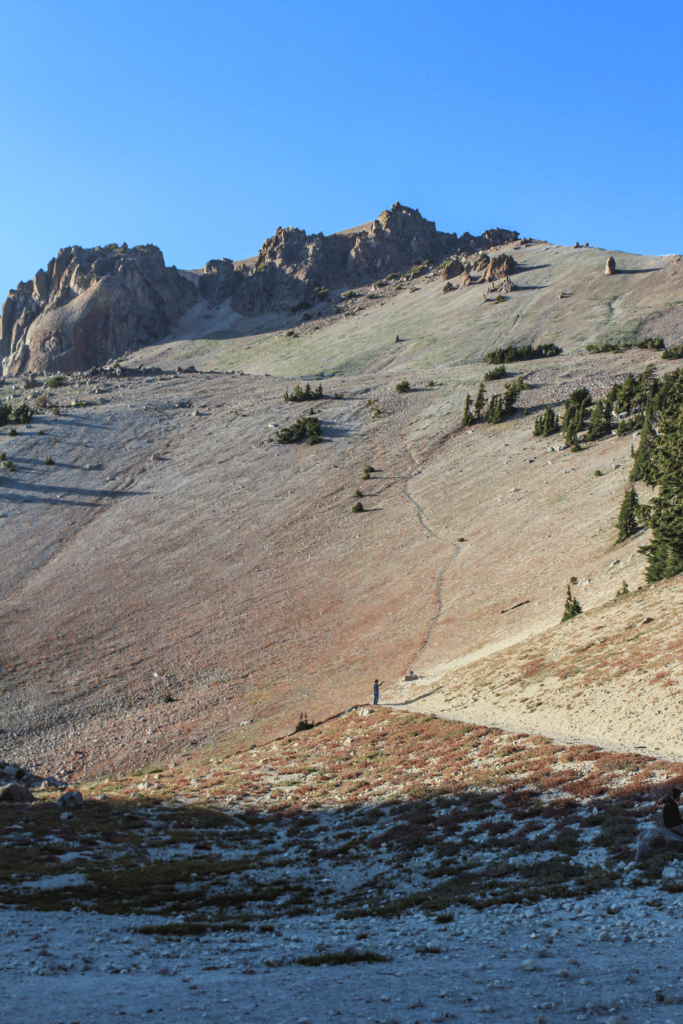
An Unsolved Murder
As for Peter Lassen, he did not live to enjoy any of the fame or fortune associated with his discoveries. As a matter of fact, he was searching for a fortune when he met with an untimely end.
Lassen was shot and killed on April 26th, 1859, along with his friend, Edward Clapper.
They were traveling in search of rumored silver mines.
Another friend traveling with them, Americus Wyatt, miraculously escaped.
Wyatt told everyone that the Nothern Paiutes were to blame, but there was no evidence that any Native American tribes were involved.

Lassen’s murder remains unsolved to this day though some suspect he and Clapper may have been killed by Wyatt.
To learn more about this fascinating man and the legends which arose surrounding his amazing story, I recommend: Legendary Truths, Peter Lassen & His Gold Rush Trail in Fact & Fable by Ken Johnston.
4. Lassen Was Also A Meeting Point For At Least Four Native American Tribes
In researching the incredible history of America’s national parks, I believe it is important to consider the role played by the indigenous peoples who spent time there.
When it comes to understanding the importance of preserving and protecting these sacred places, Native Americans typically take a back seat to no one. Their reverence for the land is well documented.
One of the more interesting Lassen Volcanic National Park Facts concerns the role that this area played as an important crossroads for different Native American groups.
According to the National Park Service, the Lassen area was a meeting point for at least four Native American Indian groups: Atsugewi, Yana, Yahi, and Maidu.

CHECK OUT: 15 MUST-SEE Historic Sites In California
The Area Was Not Conducive To Year-Round Living
Because of its weather and snow conditions, generally high elevation, and seasonally-mobile deer populations, the Lassen area was not conducive to year-round living so the following tribes camped there in warmer months for hunting and gathering.
- Atsugewi wintered along Hat Creek and Hat Creek Valley and moved into the north and northwest areas of the present-day park along the Hat Creek and Lost Creek drainages in spring and summer.
- Yana and related Yahi spent the majority of the year in the foothills along Mill Creek and west-flowing waters and followed the deer herds to higher elevations of the park in the summer months.
- Mountain Maidu made the southern and eastern portion of the Lassen region their home, including Warner Valley and Juniper Lake. (Source: NPS)

CHECK OUT: 25 Bucket List Famous Landmarks In America (MUST-SEE)
5. An Eruption At Lassen Peak Devastated Nearby Areas & Rained Volcanic Ash As Far Away As 200 Miles
Another fascinating Lassen Volcanic National Park Fact involves the explosive volcanic eruption of May 22nd, 1915, which forever changed this area.
According to the U.S. Geological Survey, on May 30, 1914, Lassen Peak awoke from a 27,000-year-long slumber when it was shaken by a steam explosion.
That first explosion created a small crater at the summit of Lassen Peak, and each of more than 180 subsequent steam explosions enlarged it.
Over more than 11 months, these steam explosions blasted out a crater 1,000 feet across. In mid-May 1915, the character of the eruption changed dramatically.
On the evening of May 14, 1915, incandescent blocks of lava could be seen bouncing down the flanks of Lassen Peak from as far away as Manton, 20 miles to the west.
By the next morning, a growing lava dome had filled the crater at the summit of Lassen Peak.

Events of May 19–20, 1915
Late on the evening of May 19, a large explosion shattered the lava dome, creating a new crater at the summit of Lassen Peak.
No new magma was ejected in this explosion, but glowing blocks of hot lava from the dome fell on the summit and the deeply snow-covered upper flanks of Lassen Peak—the winter of 1914–15 was the first recorded El Niño year in the western United States, and more than 30 feet of snow blanketed the upper flanks of Lassen Peak.
These falling blocks of hot rock launched a half-mile-wide avalanche of snow and rock that roared 4 miles down the volcano’s steep flank and over a low ridge at Emigrant Pass into Hat Creek.
As the hot lava blocks broke into smaller fragments, the snow melted, causing the avalanche to transform into a giant mudflow of volcanic materials, called a lahar.
As they came to rest, both the avalanche and lahar released huge volumes of muddy water, flooding the lower Hat Creek Valley during the early morning hours of May 20.
The flood damaged several ranch houses in the Old Station area. Fortunately, the few people in these houses escaped with only minor injuries.
The flood continued down Hat Creek more than 30 miles to the Pit River, where many fish were killed by the muddy water.

Climactic Event of May 22, 1915
After two quiet days, Lassen Peak exploded in a powerful eruption at about 4:00 in the afternoon of May 22. That blast hurled rock fragments and pumice high into the air and created the larger and deeper of the two craters seen today near the summit of the volcano.
Over the next 30 minutes, a huge column of volcanic ash and gas rose more than 30,000 feet into the air—it was visible from as far away as Eureka, California, 150 miles to the west.
Partial collapse of the eruption column that fell onto the northeastern slope of Lassen Peak generated a high-speed flow composed of hot ash, pumice, rock fragments, and gas—called a pyroclastic flow—that swept down the side of the volcano, devastating an area of 3 square miles.
This flow rapidly incorporated and melted snow in its path. The water from the melted snow transformed the pyroclastic flow into a highly fluid lahar that followed the path of the May 19–20 lahar and rushed 15 miles down Lost Creek nearly to Old Station.
This new lahar released a large volume of water that once again flooded lower Hat Creek.
It also produced smaller mudflows on all flanks of Lassen Peak, deposited a layer of pumice and volcanic ash traceable for 25 miles to the northeast, and rained fine ash as far away as Elko, Nevada, 280 miles to the east. (Source: U.S.G.S.)

CHECK OUT: 16 Yosemite National Park Facts Which Will Amaze You
Top 10 Lassen Volcanic National Park Facts
6. John F. Kennedy Visited Lassen Volcanic National Park
Lassen Volcanic National Park has had some notable visitors, but its most famous would likely be President John F. Kennedy.
On September 27 and 28, 1963, President John F. Kennedy visited Lassen Volcanic National Park as part of his conservation agenda tour of the West.
He was accompanied by Secretary of the Interior Stewart Udall, Press Secretary Pierre Salinger, and California Governor Pat Brown.
They arrived by helicopter from Redding Airport and traveled by car to Manzanita Lake shortly before sundown.
While a park naturalist led Udall and members of the press corps on a nature trail around the lake, Kennedy retired to the Manzanita Lake Lodge manager’s residence (now the Discovery Center) for some rest.
As the visit was only an overnight stop on the President’s western tour, the party only spent a short period of time at Manzanita Lake the next morning before leaving the park the same way they had come.

Kennedy Believed That Conservation & Environmentalism Were Intertwined
As Professor of Environmental Analysis & History Char Miller notes, writing in Green Urbanism: Remembering JFK’s Major Environmental Achievements, John F. Kennedy believed that conservation and environmentalism were intertwined.
“President Kennedy promoted the passage of a land and water conservation fund from which the government would purchase wetlands, wild lands, and other threatened terrain.”
John F. Kennedy was a strong advocate for conservation and the protection of natural resources.
During his time as President, Kennedy worked to establish several national parks and conservation areas, including the Arctic National Wildlife Refuge in Alaska.
He also signed the Clean Air Act into law, which aimed to reduce air pollution and improve air quality in the United States.
In addition, Kennedy was instrumental in the passage of the Water Quality Act, which helped to improve the quality of water in the United States.
He also created the President’s Council on Physical Fitness and Sports, which encouraged Americans to lead healthier and more active lifestyles.

Our national conservation effort must include the complete spectrum of resources: air, water, and land; fuels, energy, and minerals; soils, forests, and forage; fish and wildlife. Together they make up the world of nature which surrounds us- of the American heritage.
-president john f. kennedy
CHECK OUT: Is It Time For Another Bipartisan Era Of Environmental Activism?
7. A Photographer’s Pictures Of Lassen Focused National Attention On The Area And Helped To Bring About A National Park
Some of the names associated with the story of Lassen Volcanic National Park, such as John F. Kennedy, are well known to history. Others, however, are largely unknown.
In doing the research, I have found that it is often those whom we know the least about who have the greatest impact through their singular determination to bring about change.
It is said that “a picture is worth a thousand words.” One of my favorite Lassen Volcanic National Park Facts is the story of Benjamin Franklin Loomis.

His Photos Made A Difference
According to the National Park Service, Loomis arrived in northern California with his family by way of the Nobles Emigrant Trail when he was a young child.
When he was 18, he moved to the Manzanita Lake area where he built a cabin on the creek above the lake and became a shake cutter.
He married his wife, Estella, at age 40 and they welcomed their daughter Louisa Mae two years later.
On May 30, 1914, Loomis received word that Lassen Peak was erupting.
In June, he shot a series of six exposures that brought Lassen Peak into the national spotlight and supported the campaign to establish Lassen Volcanic National Park.
He continued to make trips to the mountain whenever he could throughout the next year to record the events and to guide visiting geologists and dignitaries to the volcano.
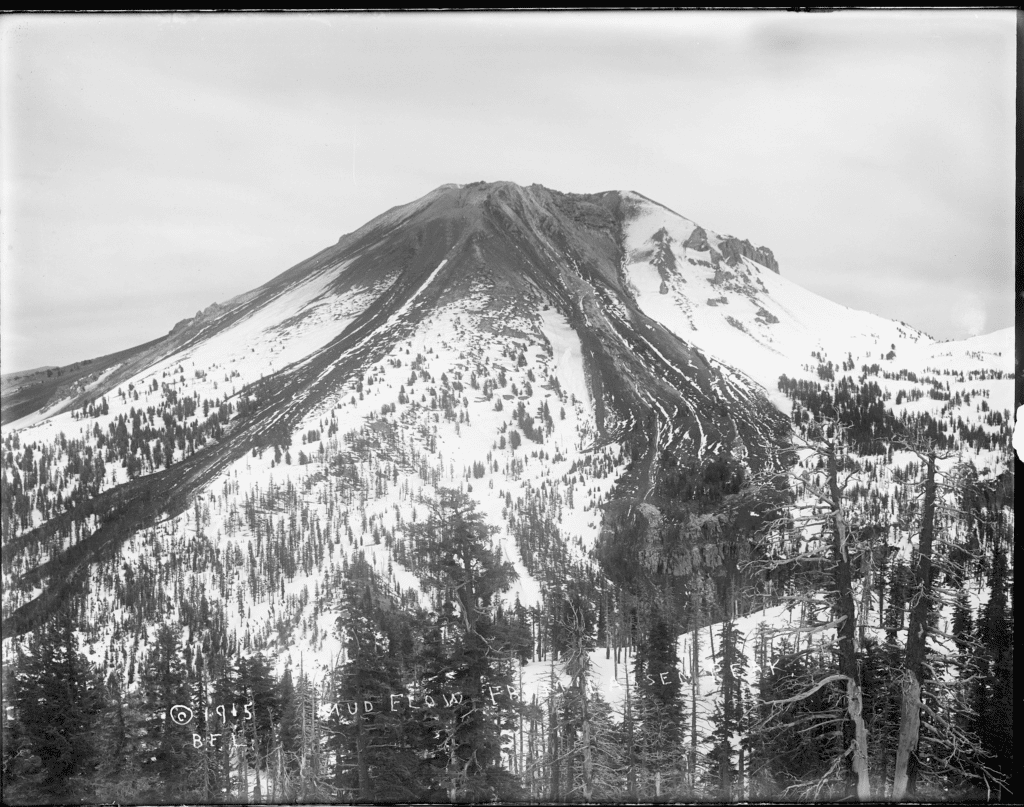
Louisa Mae Loomis Memorial Museum
In 1926, the Loomises purchased 40 acres of land in the Manzanita Lake area.
The following year they completed construction of the Louisa Mae Loomis Memorial Museum in memory of their daughter who passed away in 1921.
The museum displayed B.F. Loomis’ pictorial record of the 1914-15 eruptions of Lassen Peak, which were also included in Loomis’ book Pictorial History of the Lassen Volcano that was published in 1926.
In 1929, the Loomises donated their 40 acres, the museum, and an adjacent seismograph building to the park.
That same year they began construction of a combination residence and art store across from the museum on a five-acre lifetime lease.
The couple lived and sold photographs, postcards, and film from the residence/art store. Frank and Estella greeted visitors at their art studio or the museum and sometimes gave lectures based on Frank’s photograph collection.
B.F. and Estella lived at Manzanita Lake in the summer and wintered at their home in Anderson.
Early in 1935, at the age of 78 years, B.F. developed cancer of the stomach and died on June 11 of that year.
Estella donated the Loomis Residence & Art Store to the park upon her death in 1953. (Source: NPS)

CHECK OUT: All 63 U.S. National Parks Ranked By Experts
8. The Park’s Main Road Is The Highest Road In The Cascade Mountains
If you’re planning a trip to Lassen then you’ll be pleased to know that Lassen Volcanic National Highway is a beautiful scenic drive located within Lassen Volcanic National Park.
The road, snaking across the western side of the park between the Southwest and Manzanita Lake Entrances, takes the driver near the major volcanic features.
The 29-mile main park road was constructed between 1925 and 1931, just 10 years after Lassen Peak erupted.
The road is near Lassen Peak and it reaches 8,512 feet, which makes it the highest road in the Cascade Mountains.
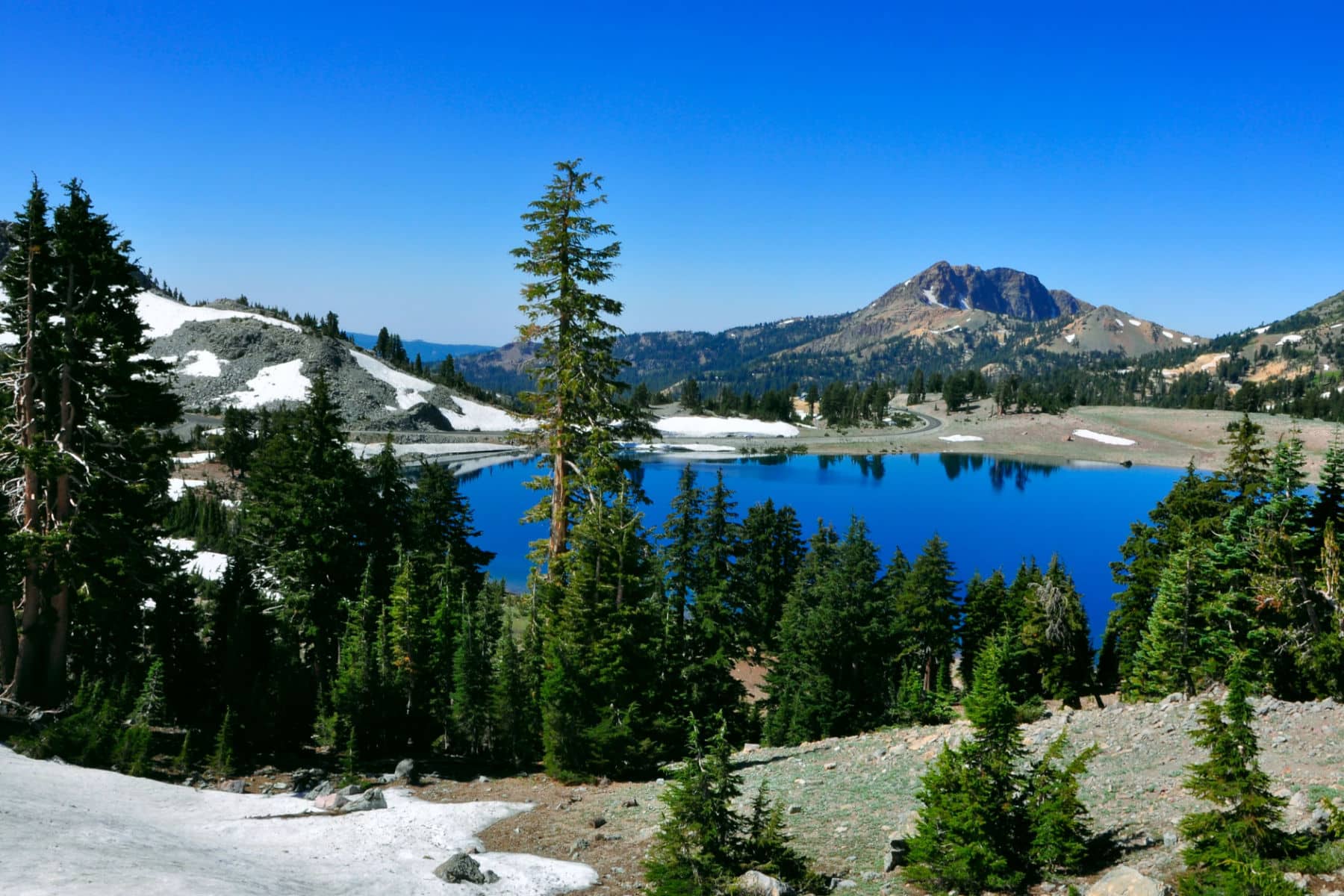
CHECK OUT: 18 (FASCINATING) Yellowstone National Park Facts You Probably Didn’t Realize
9. Every Rock At Lassen Originates From Volcanoes
Another of the amazing Lassen Volcanic National Park Facts is that every rock at Lassen originates from volcanoes.
Lassen’s volcanic domes are part of the most recently active Lassen Volcanic Center, which began to erupt about 825,000 years ago.
As referenced in the “Basic Facts Section,” in the park you will find all four types of volcanoes found in the world–shield, composite, cinder cone, and plug dome.
Unlike other Cascade volcanoes, Lassen’s large plug dome and composite volcanoes are in close proximity to the smaller cinder cone volcanoes that surround the volcanic center.
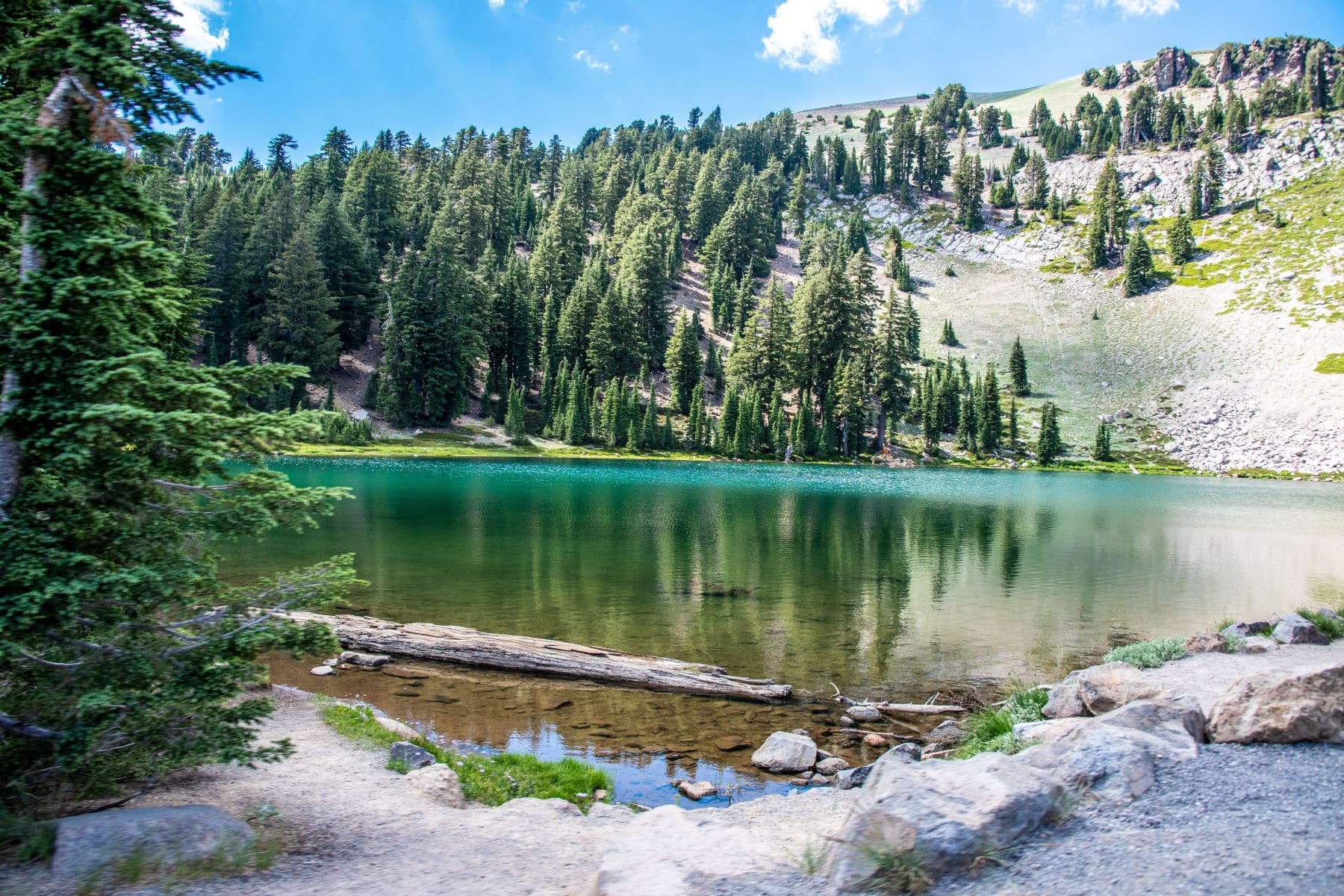
CHECK OUT: Ultimate List Of National Monuments
10. The Park Is Home To A Diverse Array Of Wildlife
Our final Lassen Volcanic National Park Fact has to do with the wonderful wildlife which you can observe there.
The park is home to approximately 300 species of vertebrates, which includes birds, mammals, reptiles, amphibians, and fish.
Lassen provides habitat for approximately 216 species of birds in which 96 have been known to breed in the park. Most of the species that occur in the park are neotropical migrants.
These birds use the park in summer to breed and forage and then fly to Central and South America to spend the winter.

Why Trust Us About Lassen Volcanic National Park?
We’re Jim Pattiz and Will Pattiz, collectively known as the Pattiz Brothers (and sometimes the Parks Brothers) and we absolutely LOVE the national parks.
You should probably know that we don’t just make this stuff up out of thin air. We’ve spent our entire adult lives exploring and filming America’s national parks and public lands.
We’ve worked with the National Park Service, the Department of Interior, USDA, and the U.S. Forest Service for years creating films on important places and issues. Our work has been featured in leading publications all over the world and even some people outside of our immediate family call us experts on the national parks.

Meet The Parks Brothers
Map Of Lassen Volcanic National Park
List Of Lassen Volcanic National Park Facts
- All Four Types Of Volcanoes Found In The World Are Represented In Lassen Volcanic Park
- An American Frontiersman Was The First To Explore The Area Of Lassen Volcanic National Park
- The Man For Whom Lassen Volcanic Park Is Named Had An Incredible Story
- Lassen Was Also A Meeting Point For At Least Four Native American Tribes
- An Explosive Eruption At Lassen Peak Devastated Nearby Areas & Rained Volcanic Ash As Far Away As 200 Miles
- John F. Kennedy Visited Lassen Volcanic National Park
- A Photographer’s Pictures Of Lassen Focused National Attention On The Area And Helped To Bring About A National Park
- The Park’s Main Road Is The Highest Road In The Cascade Mountains
- Every Rock At Lassen Originates From Volcanoes
- The Park Is Home To A Diverse Array Of Wildlife
We Hope You’ll Follow Our Journey

Our goal here at More Than Just Parks is to share the beauty of America’s national parks and public lands through stunning short films in an effort to get Americans and the world to see the true value in land conservation.
We hope you’ll follow our journey through the parks and help us to keep them the incredible places that they are. If you’re interested joining the adventure, sign up below!
Helpful Articles
California: 20 BEST California National Parks Ranked
Los Angeles: 7 Epic National Parks Near Lost Angeles You’ll Love
Parks Near San Diego: 7 Amazing National Parks Near San Diego
San Francisco: 8 Best National Parks Near San Francisco
Parks Near San Jose: 7 Best National Parks Near San Jose
Redwood: Redwood National Park
Death Valley: Death Valley National Park
Pinnacles: 10 Epic Things To Do At Pinnacles National Park
Yosemite: 16 Yosemite National Park Facts Which Will Amaze You
Historic Sites: 15 Must-See Historic Sites In California



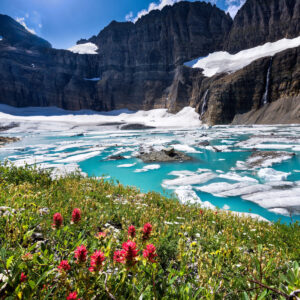

Leave a Reply